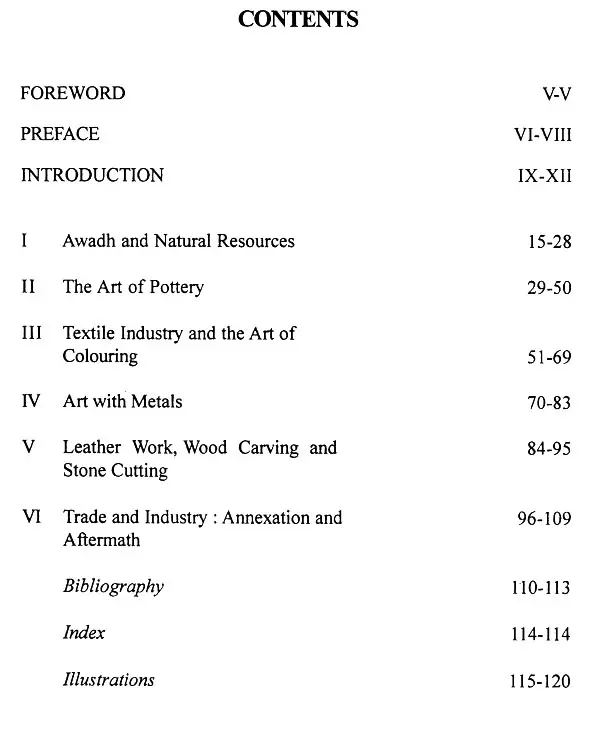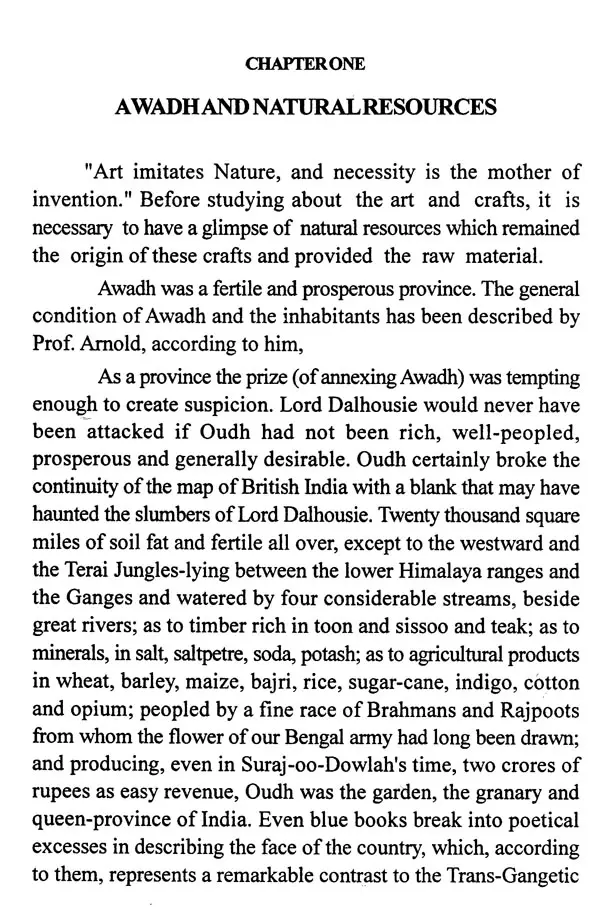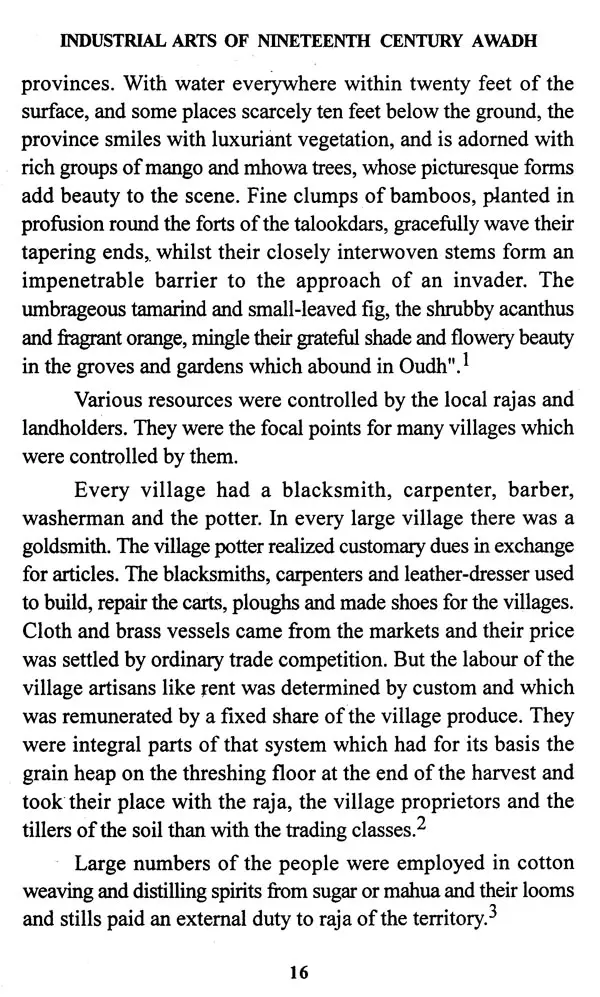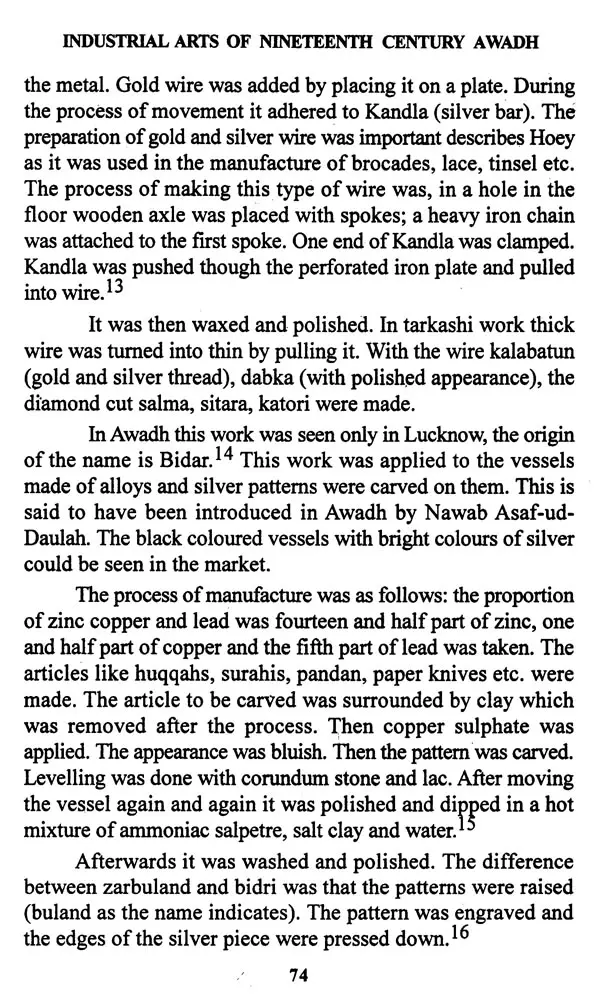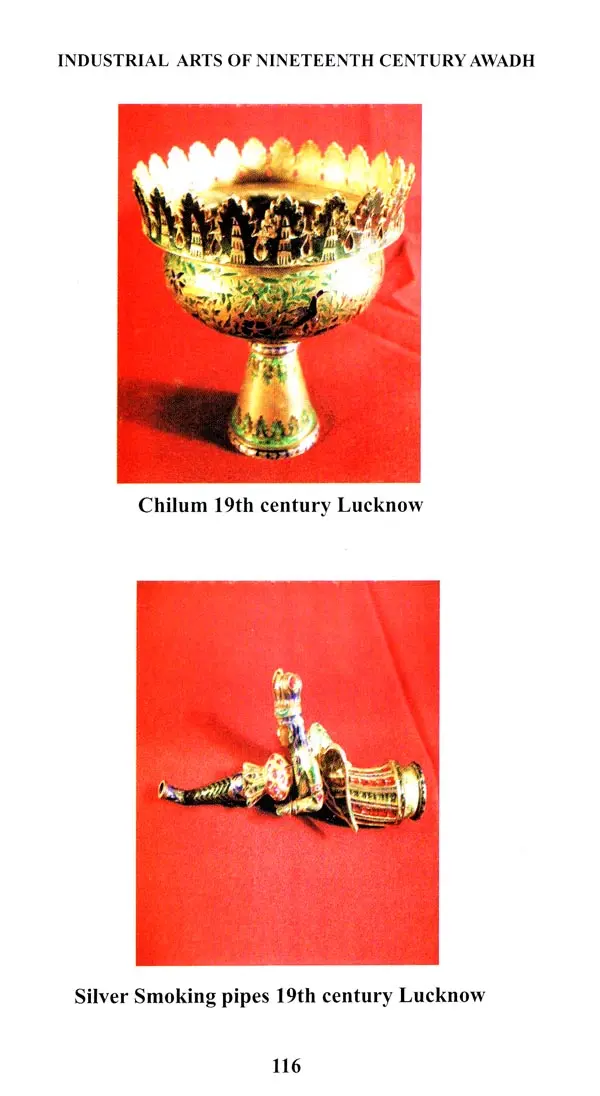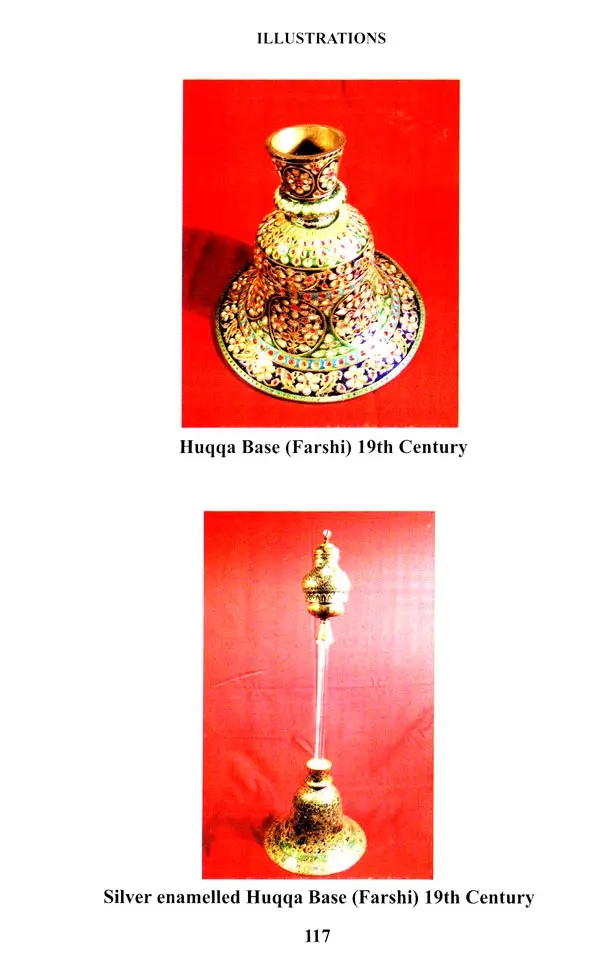
Industrial Arts of Nineteenth Century Awadh
Book Specification
| Item Code: | UAF143 |
| Author: | Mamta Bhatnagar |
| Publisher: | KALA PRAKASHAN |
| Language: | English |
| Edition: | 2015 |
| ISBN: | 9789385309670 |
| Pages: | 120 (Throughout Color Illustrations) |
| Cover: | HARDCOVER |
| Other Details | 9.00 X 6.00 inch |
| Weight | 270 gm |
Book Description
Not much has been written about the industrial arts of Awadh. The present work is a complete and connected study of arts and crafts which were industrialized in Awadh. The emergence of the principality of Awadh and the patronage of the Nawabs to artists and scholars led to the development of the industrial arts.
The study of the interim period of regional history has its own importance. On one hand Mughal Empire was disintegrating and on the other the regional dynasties emerged as the centers of Mughal culture. Mamta Bhatnagar has made a study of the arts and crafts for which Awadh became famous. The art of pottery, metal embroidery, leather work has been portrayed in this work. The original sources in Persian, Urdu have been consulted. The events and activities have been depicted as if they were actually happening. It is a true record in which we find a glimpse of Oudh culture.
"The very texture of every enduring work of art must imbed the glowing life of its own times and the embers of the past. If it does not cover space as history it must plumb the depths of emotion in an individual to reach the universal perception."The present work is an attempt to study the industrial arts of Awadh. Lucknow became the administrative center of Awadh; the court and nobility, of art and literature, many people from other parts of the country came to Lucknow. Soon it was the center of cultural and literary activities, also a trading and commercial center. Apart from agriculture, non -agricultural pursuits like local industries and trade also attracted a large number of people. These local industries and trade flourished well. Various industrial arts like pottery, silver and gold embroidery, the art of printing and colouring the clothes, leather work etc., were patronized by the Nawabs. As Asaf-ud-Daulah invited skilful craftsmen Lucknow became an important trading center. The craftsmen were encouraged by the Nawabs and received bountiful rewards and fine arts were industrialized. The Nawabs pursued the policy of developing the local industries by erecting high tariff walls to check the flow of British goods. As a result, during the last decade of Nawabi regime the kingdom was self -sufficient in many respects. There was a decline of art and industry after annexation, as a result of the loss of patronage by the Nawabs. The revival of these crafts took nearly twenty years after annexation.
I have sought to give an authentic account of the development of the industrial arts. The contemporary records, the original sources in Persian and Urdu, apart from the primary sources, other sources and records have been cited.
While studying the History of Awadh, how can one forget the "monumental work" -'Awadh Under Wajid Ali Shah' by my Father Late Prof. G.D.Bhatnagar. He gave me many rare sources. Also, I can never forget my Mother's help in my work. She remained with me to show every nook and corner where any piece of art could be seen. I console myself by dedicating this book to my parents. The music of their voices vibrates in my memory and inspires me to write.
I owe an extremely personal debt of gratitude to my Father's friend Late Prof. M.Rizwan Alvi, of Arabic Department former Dean, Faculty of Arts, Lucknow University, for his guidance and encouragement.
I express my gratitude to Prof. J.P.Misra who helped me and agreed to write a Foreword to the book.
National Archives of India I take this opportunity to thank the authorities and staff of the Central Library, B.H.U., Bharat Kala Bhawan, B.H.U., National Archives of India, National Library, Calcutta, Lucknow University Library, Lucknow, Maulana Azad Library Aligarh Muslim University.My special thanks are due to my sisters, Dr. Vijaya Kirti and Dr. Smriti and my brother, Mr. Desh Deepak and family. I also remain grateful to my maternal uncles Dr. N.S.Bhatnagar and Dr. I.S. Bhatnagar who encouraged me to write the book.
I am thankful to Dr. P.S. Dwivedi for publishing this book with sincerity.
None of those who have helped me are responsible for any defects that remain.
My heart-felt thanks are due to all those who have helped me with advice, encouragement and sympathy.
The gradual displacement of the old order and emergence of new- court of Awadh was witnessed by the second half of eighteenth century. The court of Awadh was considered the most renowned in India. It was crowded with foreigners, some of them men of rank and substance, others adventurers.
The 'Queen Province of India', Awadh of the Nawabs was one of the independent principalities formed from the remnants of the mighty Mughal Empire. During Mughal period, it was a vast province and included modern Faizabad, Gorakhpur , Bahraich , Lucknow and Khairabad.1 At the time of disintegration of the Mughal Empire , the weak successors could not keep Subandars in control and they became practically independent. The principality came into existence as a result of the intrigues, and the ambitions of the provincial governors and Delhi court was finally reduced into an unhealthy swamp of petty politics. The son and successor of Aurangzeb, Bahadur Shah gave shelter to many Persian families who came to India as a result of civil wars in their native land.
The conception of Lucknow , as we know today, was the dream of Asaf-ud-Daulah. After the transfer of capital from Delhi to Lucknow, he resided in Daulat-Khana. Talented men from the court of Delhi , got shelter at Lucknow. "Asaf was in some respects the greatest of Nawabs. His court was far more magnificent than that of the Mughals. From Asaf onwards it was Nawab Vizier rather than the King of Delhi who attracted adventurers ..."
Though not successful as an administrator, his extravagance and munificence became proverbial in Awadh. Asaf-ud-Daulah is best remembered as a builder. Under better circumstances, he would have been a respectable administrator.
Asaf was succeeded by Wazir Ali. He was determined to check the draining away of the sources and to reorganize the administration. But there was a conspiracy against him that he was not the legitimate son of Asaf. He was finally deposed.
Saadat Ali Khan ascended the throne in 1798. During his reign the treaty of 1801 was signed and half the territory was taken by the British. In the remaining years of his life he devoted himself for the betterment of his subjects. He kept the oath he had taken at Dargah Hazrat Abbas, not to drink and worked with full energy to improve the condition of Awadh. 2
In revenue collection, the ijara system was abandoned, amani system was followed. To quote Colonel Mc Andrew, as a result of his administration, "people became contented and prosperous", much waste land was broken up and a very general conversion of rents in kind into rents in money took place in the most populous parts of the province...."He was called a miser, a friend of the ryot. He left a treasury of fourteen crore of rupees.3 The buildings in the eastern part of Lucknow were erected by him.
Ghaziuddin Haider(1814-1827) succeeded Saadat Ali Khan. He was a learned man. He had a very good idea of oriental learning and knew Arabic and Persian. He was also interested in Science. Warren Hastings thought that Ghazi "if created a/King would be useful counterpoise to the Emperor of Delhine induced him to coin money in his own name and to assume the title of Shah."With Ghaziuddin Haider, Kingship was introduced in Awadh. He built Chattur Manzil, Shah Najaf, and also a market on the other side of the river, called Badshah Ganj.
Nasiruddin Haider, the next King, in spite of the description in most of the contemporary sources, established hospitals, provided food and medicine to the poor patients,4 a monthly allowance of 3,000 rupees was given to the students, prohibited slavery. It is said that Nasiruddin Haider was poisoned to death in 1832. He erected Darul Shafa, Tarawali Kothi, Banarasi Bagh etc.
Muhammad Ali Shah succeeded Nasiruddin Haider. He was already an old man, prudent and descent. He was popular among his subjects. He introduced some reforms and the economic condition improved. He was a patron of architecture.
Amjad Ali Shah's reign was uneventful.He was a religious man, promoted Islamic learning in the state. He built Aminabad and Hazaratganj.
The last King of Awadh was Wajid Ali Shah . He was a great patron of literature and arts. He himself was a great poet. He is called the ill-fated King as during his reign, Awadh was annexed by the British, He tried to introduce reforms in the administration but all his efforts were in vain, as there was British interference. There were new treaties since subsidiary alliance, which had increased the British interference all the more, and finally Dalhousie's policy of annexation led to the end of the rule of Nawabs.

